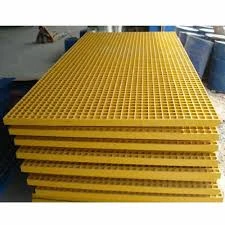loading...
- No. 9, Xingyuan South Street, Dongwaihuan Road, Zaoqiang County, Hengshui, Hebei, China
- admin@zjcomposites.com
- +86 15097380338
- Welcome to visit our website!
Maximizing Efficiency in GRP Water Storage Solutions for Sustainable Management
The Importance of GRP Water Storage Tanks
In today’s rapidly advancing world, the need for efficient and durable water storage solutions has never been more critical. One of the most effective solutions available is the Glass Reinforced Plastic (GRP) water storage tank. GRP tanks are increasingly gaining popularity due to their numerous benefits, which range from durability to cost-effectiveness.
What are GRP Water Storage Tanks?
GRP water storage tanks are made from a composite material that combines glass fibers with a polymer resin. This unique combination results in a lightweight, strong, and corrosion-resistant material, making it an ideal choice for water storage applications. These tanks are available in various shapes and sizes, which allows for flexibility in design and installation to meet specific needs.
Advantages of GRP Water Storage Tanks
One of the standout features of GRP tanks is their resistance to corrosion. Unlike traditional steel or concrete tanks, GRP tanks do not rust or degrade over time, making them a more reliable option for long-term water storage. This durability significantly reduces maintenance costs and extends the lifespan of the tank, making it a cost-effective choice for businesses and municipalities alike.
Moreover, GRP tanks are incredibly lightweight compared to their concrete or stainless steel counterparts. This attribute simplifies transportation and installation, especially in remote or hard-to-reach locations. The ease of installation can also translate into reduced labor costs, allowing for quicker project completion.
grp water storage tanks

Another significant advantage is the versatility in design. GRP tanks can be custom-made to fit specific requirements, whether it’s for residential use or large commercial applications. They are also available in different capacities, ranging from small tanks designed for domestic use to large-scale tanks suitable for industrial applications.
Environmental Impact
In an age where sustainability is paramount, GRP water storage tanks offer an eco-friendly alternative. The manufacturing process of GRP materials generates fewer pollutants compared to other traditional materials like concrete and steel. Additionally, these tanks can be produced with recyclable materials, contributing to a circular economy and reducing the overall environmental footprint.
Applications of GRP Water Storage Tanks
The applications of GRP water storage tanks are vast and varied. They are commonly used in industries such as agriculture, construction, and municipal water systems. These tanks are ideal for storing potable water, irrigation water, and even chemicals, depending on the specific requirements. Their flexibility also allows them to be used in emergency water supply systems, making them a crucial component in disaster preparedness and response strategies.
Conclusion
As water scarcity becomes a pressing issue in various parts of the world, the importance of efficient water storage solutions cannot be overstated. GRP water storage tanks offer a robust, reliable, and environmentally friendly option for a wide range of applications. Their durability, low maintenance, and cost-effectiveness make them a wise investment for businesses, municipalities, and individuals alike. With the growing focus on sustainable practices and the management of water resources, the demand for GRP water storage tanks is likely to continue to rise, making them an essential part of our water management infrastructure.
-
The Rise of FRP Profiles: Strong, Lightweight, and Built to LastNewsJul.14,2025
-
SMC Panel Tanks: A Modern Water Storage Solution for All EnvironmentsNewsJul.14,2025
-
GRP Grating: A Modern Solution for Safe and Durable Access SystemsNewsJul.14,2025
-
Galvanized Steel Water Tanks: Durable, Reliable, and Ready for UseNewsJul.14,2025
-
FRP Mini Mesh Grating: The Safer, Smarter Flooring SolutionNewsJul.14,2025
-
Exploring FRP Vessels: Durable Solutions for Modern Fluid HandlingNewsJul.14,2025
-
GRP Structures: The Future of Lightweight, High-Performance EngineeringNewsJun.20,2025
